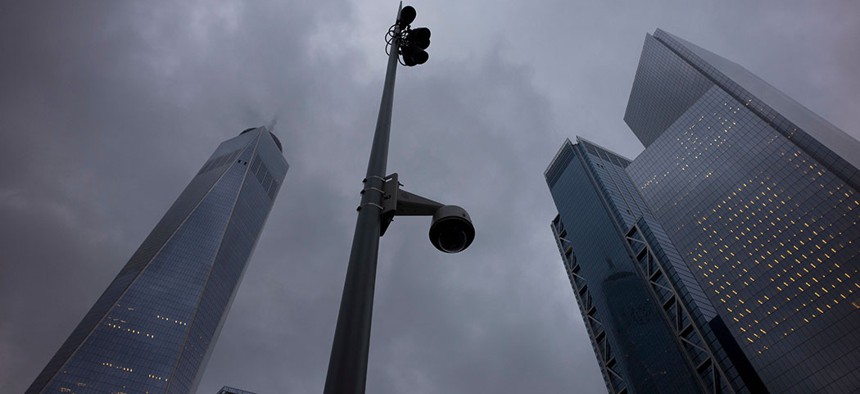From secretly collecting DNA samples of minors to maintaining a gang database that is suspiciously over 98% black or Latino, there are many examples of why the NYPD cannot be trusted to deploy surveillance tools without legal safeguards to prevent them from violating New Yorkers’ privacy and civil rights.
Most recently, The New York Times exposed how the company Clearview amassed more than three billion photos from popular websites such as Facebook, LinkedIn, and Venmo to power its facial recognition app. It didn’t take long for another Buzzfeed to uncover that Clearview was touting a relationship with the NYPD in its promotional materials.
The department denied that it had an “institutional relationship” with Clearview, but a New York Post investigation quickly found that several NYPD officers were running the app on their personal phones. The NYPD eventually conceded that a limited number of officers were allowed to run trial versions of the app. Of course, we still don’t know what controls (if any) the department put in place to prevent abuse, and what it will do with data it collected during these trial periods.
The department’s cavalier approach to monitoring New Yorkers cannot escape regulation any longer. A bill with overwhelming support in the City Council, the Public Oversight of Surveillance Technology Act (POST Act), would bring much needed transparency. It would require the NYPD to make basic disclosures about its surveillance tools and what policies it has in place to protect the privacy of New Yorkers. The bill already has 33 co-sponsors in the 51-member City Council, including Public Advocate Jumaane Williams and Public Safety Chairman Donovan Richards. Supporters are waiting on Speaker Corey Johnson to allow the bill to come up for a vote.
The NYPD has mounted fierce opposition to the POST Act, claiming the legislation would help criminals and endanger lives by forcing the department to give away too much information. But these arguments do not hold up under scrutiny.
The POST Act’s reporting obligations are too general to be a useful roadmap for the bad guys. The bill would not require disclosure of how it uses surveillance tools in specific investigations, or disclosure of where or when it might be used. It would not require disclosure of how someone might avoid it.
It also wouldn’t make the tools any less effective. For example, wiretaps continue to be an important investigative tool despite widespread knowledge of their existence and a strict legal framework governing their use. Why should New Yorkers have fewer protections for their faces than for their landline telephones?
NYPD’s modern surveillance tools, and their related privacy and racial bias concerns, are already well known to the public. From facial recognition technology that cannot reliably identify people of color to Stingray devices that collect cell phone information regardless of a connection to a suspected crime, journalists and lawyers have slowly informed the public about surveillance abuses despite the NYPD’s steadfast resistance to basic transparency.
Last year, the Brennan Center published a chart showing the scope of the NYPD’s surveillance arsenal based on publicly available information. This chart tracks the potential impact of each tool and provides links to NYPD policies to the extent they exist. Even this incomplete inventory reveals an expansive network that covers large swaths of New York City, including roads, homes, parks, and even online spaces. It would be difficult for the NYPD’s hypothetical criminal to participate in modern society without coming under the scope of the department’s surveillance apparatus.
Rather than wait for another alarming headline about dystopian surveillance, the POST Act would front-load oversight. It would allow policymakers and community members to have an informed conversation about the rules of the road before the NYPD deploys a new technology. It also would encourage the NYPD to be more thoughtful in how it approaches new surveillance technologies. This approach can help prevent foreseeable harms to individual rights, strengthen community trust, and avoid wasting scarce resources.
When the City Council first debated the POST Act in 2017, it had the opportunity to be a leader – now, it has fallen behind. Cities across the country, including San Francisco, Seattle and Nashville, have all passed laws to hold their police departments accountable. Each of these laws goes further than would be required under the POST Act. In some jurisdictions, police must obtain City Council approval before they can acquire new surveillance tools; a growing number of cities have even passed outright bans of facial recognition technology.
But in New York, when Council member Robert Holden asked the city Department of Information Technology and Telecommunications whether the NYPD uses facial recognition, a widely reported fact, a representative said the department did not know.
It doesn’t have to be this way. We need 21st Century oversight of 21st Century policing. Every day the City Council waits to pass the POST Act is a gamble for the civil rights and civil liberties of New Yorkers. The POST Act’s basic transparency reporting is needed to ensure that New York remains a strong local democracy that respects the constitution and the rule of law.


